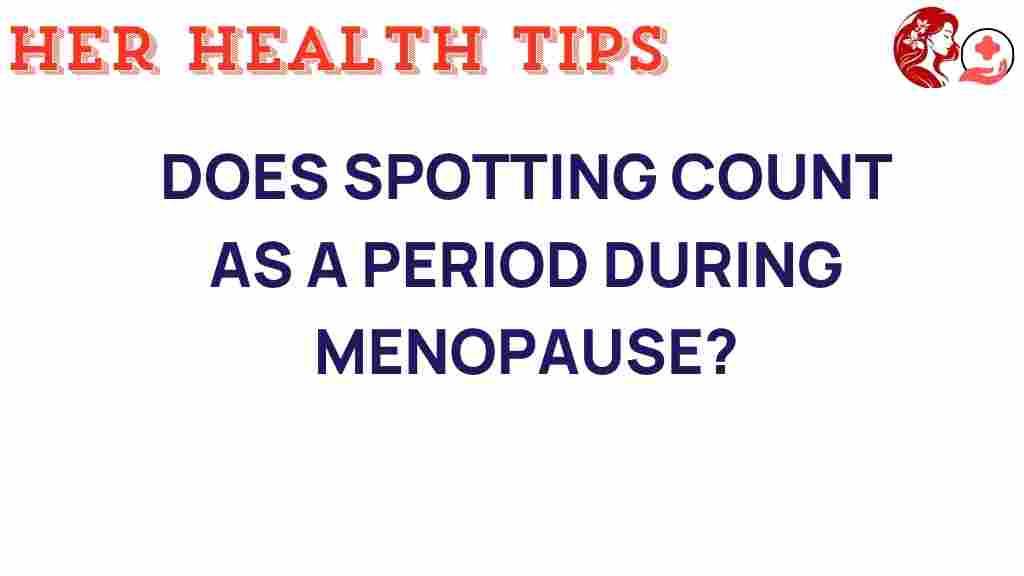Is Spotting a True Period? Unraveling Menopause Mysteries
Understanding menopause and its myriad effects on women’s health can be a complex journey. One common concern among women approaching this stage of life is the phenomenon of spotting. Many wonder if spotting is a true period or merely a sign of hormonal changes. In this article, we will unravel the mysteries of spotting, menopause, and how they relate to the menstrual cycle, reproductive health, and common health myths.
What is Spotting?
Spotting refers to light bleeding that occurs outside of a woman’s normal menstrual cycle. It can happen at various times and is typically much lighter than a regular period. Spotting can be caused by several factors, including hormonal changes, which play a significant role during menopause.
Spotting vs. Menstrual Period
To understand whether spotting is a true period, it’s essential to differentiate between the two:
- Menstrual Period: A menstrual period involves heavier bleeding that lasts several days, typically occurring every 21 to 35 days.
- Spotting: Spotting is characterized by light bleeding that may last a few hours to a couple of days and is generally much lighter in flow.
The Connection Between Spotting and Menopause
As women approach menopause, their bodies undergo significant hormonal changes that can affect their menstrual cycles in various ways. Understanding these changes is crucial for women’s health.
Hormonal Changes During Menopause
Menopause marks the end of a woman’s reproductive years, typically occurring between ages 45 and 55. The primary hormonal changes involve:
- Estrogen Levels: Estrogen levels fluctuate and eventually decline. This hormone is vital for regulating the menstrual cycle.
- Progesterone Levels: Similar to estrogen, progesterone levels also drop, affecting menstrual regularity.
These hormonal shifts can lead to irregular periods, which may include spotting. Women may experience spotting as their bodies adjust to these changes.
Understanding Menopause and its Stages
Menopause is divided into three stages:
- Perimenopause: The transitional phase leading up to menopause where hormonal fluctuations cause irregular periods and possibly spotting.
- Menopause: Defined as occurring 12 months after a woman’s last period.
- Postmenopause: The stage following menopause where spotting may still occur due to hormonal imbalances or other health factors.
Factors Contributing to Spotting During Menopause
Several factors can cause spotting during menopause, including:
- Hormonal Imbalance: Fluctuations in estrogen and progesterone can lead to unexpected bleeding.
- Uterine Polyps: Noncancerous growths in the uterus can cause light bleeding.
- Endometrial Hyperplasia: A thickening of the uterine lining that can result in irregular bleeding.
- Medications: Hormonal therapies or other medications may lead to spotting as a side effect.
When to Seek Medical Advice
While spotting can be a normal part of the menopausal transition, there are circumstances when it’s essential to consult a healthcare professional:
- Spotting that occurs after sex.
- Bleeding that is heavy or lasts longer than a few days.
- Spotting accompanied by severe pain or discomfort.
- Any new or unusual bleeding after menopause.
Health Myths Surrounding Spotting and Menopause
Many health myths exist regarding spotting and menopause. Here are some common misconceptions:
- Myth 1: Spotting is always a sign of a serious condition.
- Myth 2: All women will experience heavy periods leading up to menopause.
- Myth 3: Menopause happens suddenly without any warning signs.
Understanding these myths is crucial for maintaining good reproductive health and making informed decisions.
Step-by-Step Process: Tracking Your Menstrual Cycle During Menopause
Keeping track of your menstrual cycle can help you understand your body better. Here’s a simple guide:
- Use a Calendar: Mark the first day of your period on a calendar.
- Note Any Spotting: Record any instances of spotting, including dates and duration.
- Monitor Symptoms: Keep track of any accompanying symptoms, such as cramping or mood changes.
- Consult a Healthcare Provider: If you notice irregularities or have concerns, seek medical advice.
Tips for Managing Spotting
Here are some tips for managing spotting during menopause:
- Maintain a Healthy Lifestyle: Regular exercise and a balanced diet can help manage hormonal changes.
- Stay Hydrated: Drinking enough water can alleviate some menopausal symptoms.
- Consider Herbal Remedies: Some women find relief using herbal supplements, but always consult a doctor first.
Conclusion
In summary, spotting during menopause can be a normal occurrence due to hormonal changes affecting the menstrual cycle. It is essential to differentiate between spotting and a true period to understand your reproductive health better. While spotting may not always be a cause for concern, it is crucial to remain vigilant and consult a healthcare provider when needed. By understanding menopause and debunking health myths, women can take proactive steps towards better health. For more information on women’s health and understanding menopause, visit this resource. Remember, knowledge is power when it comes to your health!
If you wish to delve deeper into the topic, check out this comprehensive guide for more insights on women’s health and hormonal changes.
This article is in the category Reproductive and created by HerHealthTips Team
